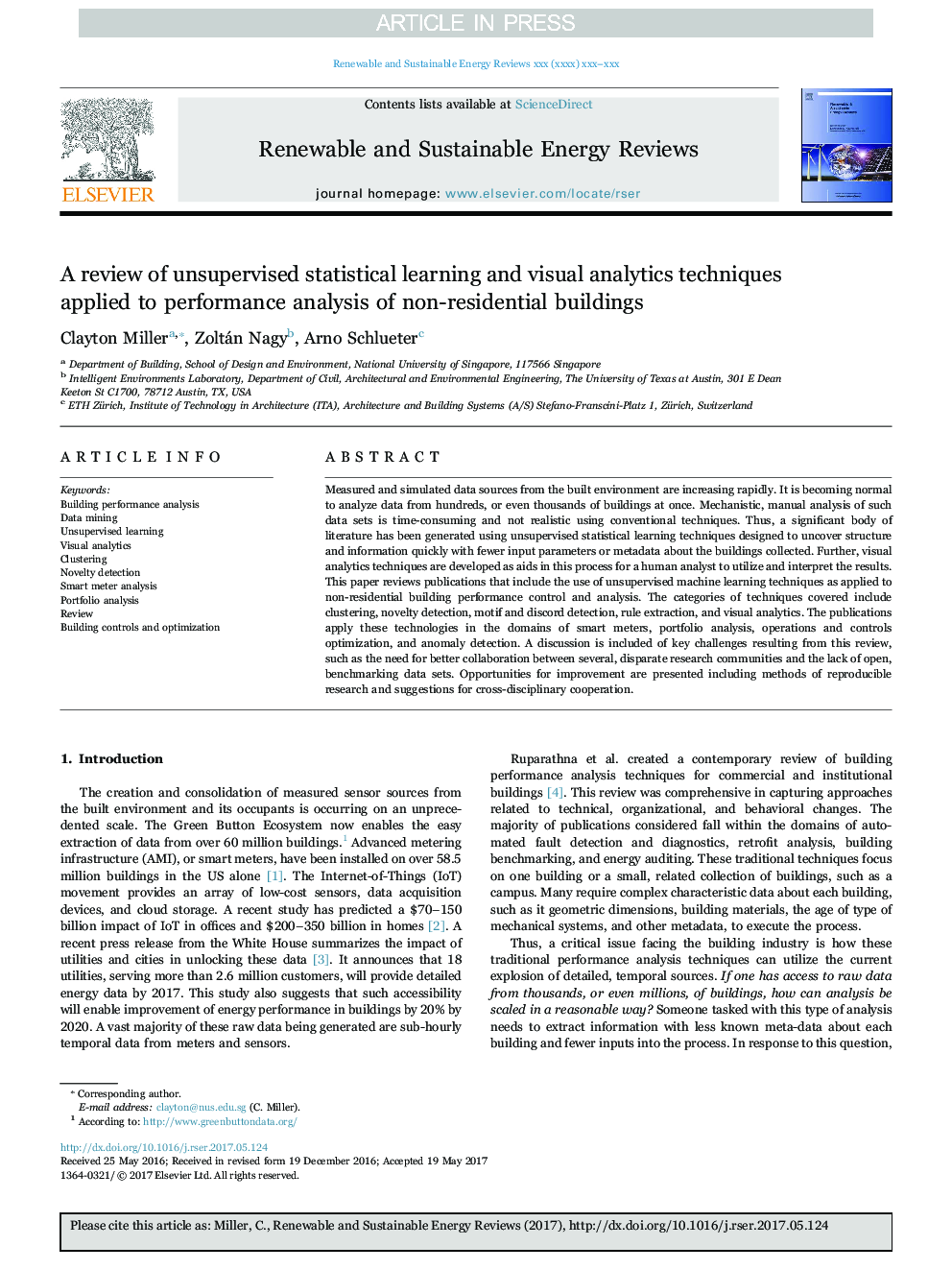| Article ID | Journal | Published Year | Pages | File Type |
|---|---|---|---|---|
| 10998176 | Renewable and Sustainable Energy Reviews | 2018 | 13 Pages |
Abstract
Measured and simulated data sources from the built environment are increasing rapidly. It is becoming normal to analyze data from hundreds, or even thousands of buildings at once. Mechanistic, manual analysis of such data sets is time-consuming and not realistic using conventional techniques. Thus, a significant body of literature has been generated using unsupervised statistical learning techniques designed to uncover structure and information quickly with fewer input parameters or metadata about the buildings collected. Further, visual analytics techniques are developed as aids in this process for a human analyst to utilize and interpret the results. This paper reviews publications that include the use of unsupervised machine learning techniques as applied to non-residential building performance control and analysis. The categories of techniques covered include clustering, novelty detection, motif and discord detection, rule extraction, and visual analytics. The publications apply these technologies in the domains of smart meters, portfolio analysis, operations and controls optimization, and anomaly detection. A discussion is included of key challenges resulting from this review, such as the need for better collaboration between several, disparate research communities and the lack of open, benchmarking data sets. Opportunities for improvement are presented including methods of reproducible research and suggestions for cross-disciplinary cooperation.
Keywords
Related Topics
Physical Sciences and Engineering
Energy
Renewable Energy, Sustainability and the Environment
Authors
Clayton Miller, Zoltán Nagy, Arno Schlueter,
